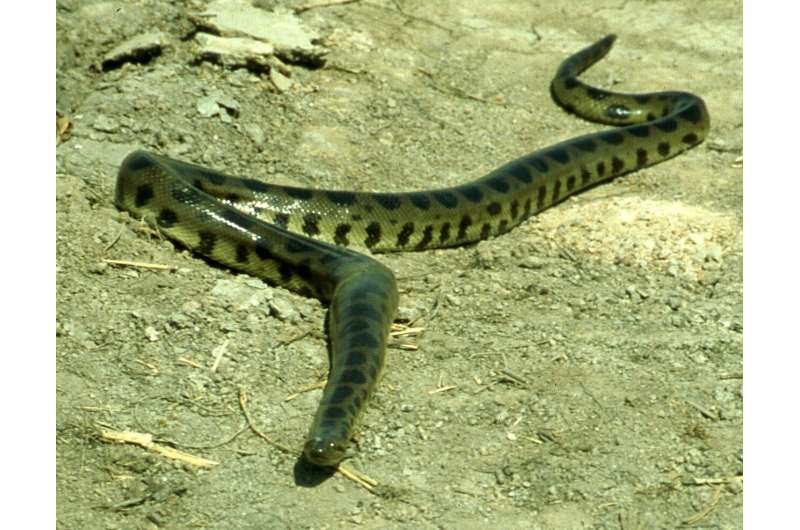Verified after two decades: The fourth anaconda species

Two decades after having described a new Anaconda species based on morphological characteristics, a team guided by David Tarknishvili succeeded in extracting DNA from some old, pre-existing tissue samples. They used these to substantiate and verify the specific status of the new species.
The new findings have been published in Amphibia-Reptilia.
Nowadays, the discovery of a new species is for the taxonomically working zoologist not very unusual, as long as these new species are small and inconspicuous. In contrast, the discovery of large, conspicuous new vertebrate species is much rarer and attracts the attention not only of specialists, but also of the broader public.
But undiscovered large-growing reptiles can be found, as has been shown by the more than dozen new monitor lizard species that have been described by members of the herpetological section of the Museum Koenig in Bonn since 1988.
The giant snakes, however, had some surprises ready for the researchers from Bonn. Apart from two new insular subspecies of the Reticulated Python—up to 9 m in length and together with the Green Anaconda the longest snake on earth—which were discovered by Museum Koenig’s former Ph.D. student Mark Auliya, his former fellow Ph.D. candidate Lutz Dirksen managed to find a new, fourth anaconda species in the Beni region of Bolivia which he introduced to science as Eunectes beniensis.
First erroneously regarded as a hybrid between the big Green Anaconda and the smaller Yellow or Paraguay Anaconda, the morphological analysis strongly suggested its status as an own, independent species, the fourth of its genus and growing at least up to 4 m in length.
Two decades later, the team guided by David Tarknishvili succeeded in extracting DNA from the old tissue samples to substantiate and verify the specific genetic status of the Beni Anaconda.
More information:
David Tarkhnishvili et al, Morphological trends and genetic divergence in anacondas, genus Eunectes Wagler, 1830 (Serpentes: Boidae), Amphibia-Reptilia (2022). DOI: 10.1163/15685381-bja10114
Provided by
Leibniz-Institut zur Analyse des Biodiversitätswandels
Citation:
Verified after two decades: The fourth anaconda species (2022, November 21)
retrieved 21 November 2022
from https://phys.org/news/2022-11-decades-fourth-anaconda-species.html
This document is subject to copyright. Apart from any fair dealing for the purpose of private study or research, no
part may be reproduced without the written permission. The content is provided for information purposes only.
For all the latest Science News Click Here
For the latest news and updates, follow us on Google News.

